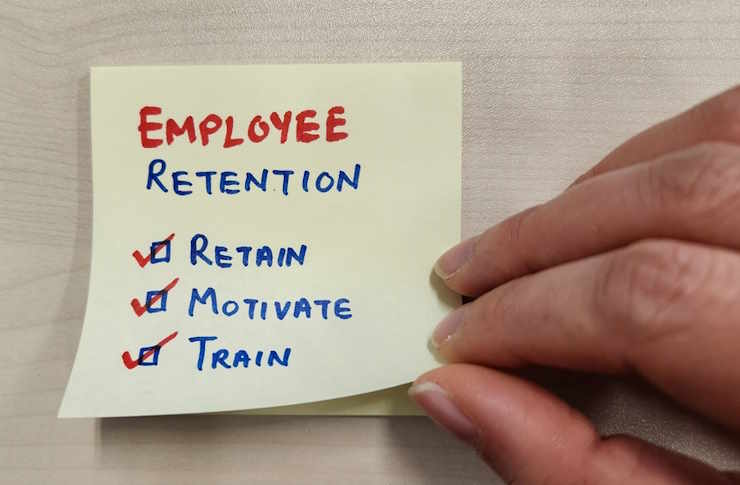HR Software in Japan – Training and Workplace Practices
HR software in Japan supports workforce management, recruitment, and employee communication. Professionals in this field rely on these systems to improve efficiency in organizational tasks. This article examines the skills, tools, and practices associated with HR software in Japan.

The integration of HR software in Japanese workplaces represents a significant shift in how companies manage their human resources while maintaining respect for traditional business practices. Japan’s corporate environment, known for its emphasis on loyalty, group harmony, and hierarchical structures, is gradually embracing digital transformation to address challenges like an aging workforce, work-life balance concerns, and increasing global competition. HR software solutions tailored to Japanese workplace dynamics are helping companies streamline operations while preserving cultural values that have long defined the nation’s business ethos.
Common Functions in Japanese HR Software Systems
Japanese HR software typically incorporates functionalities that address the unique aspects of the country’s employment practices. Employee attendance tracking is particularly sophisticated, accommodating Japan’s meticulous approach to work hours and overtime management. Performance evaluation modules often include features for nemawashi (consensus-building) and ringi (approval circulation) processes that are central to Japanese decision-making. Many platforms also incorporate tools for managing nenko joretsu (seniority-based promotion systems) while simultaneously supporting merit-based evaluation methods as companies increasingly adopt hybrid approaches to advancement. Additionally, these systems frequently include modules for managing seasonal bonuses and allowances that form a significant portion of Japanese compensation packages.
Tools for Recruitment and Employee Records Management
Recruitment software in Japan has evolved to support the country’s distinctive hiring cycles, particularly the annual shinsotsu (new graduate) recruitment process that remains central to corporate staffing strategies. Modern HR platforms offer specialized features for managing the multiple interview stages and group assessment activities that characterize Japanese hiring practices. For employee records management, systems typically maintain comprehensive documentation including educational background, skill certifications, and internal training history—elements crucial for Japan’s traditionally detailed personnel files. Many platforms now integrate digital hanko (personal seal) functionality for document approvals, merging traditional authentication methods with digital efficiency. Advanced systems also incorporate AI-powered candidate matching that considers not just skills but potential cultural fit, an aspect highly valued in Japanese workplaces.
Workplace Practices for Staff Coordination
HR software in Japan increasingly supports the evolution of traditional workplace coordination practices. Digital platforms now facilitate nemawashi processes through structured communication channels that document consensus-building while maintaining appropriate hierarchical protocols. Many systems incorporate features for managing flexible work arrangements—a growing necessity as Japan addresses work-life balance concerns through initiatives like “Work Style Reform.” Team coordination modules often include visualization tools for organizational relationships that respect reporting lines and departmental boundaries critical in Japanese corporate structures. Additionally, these platforms frequently integrate with communication tools designed to maintain proper keigo (honorific language) in digital interactions, preserving linguistic etiquette that remains important in Japanese professional communication.
Training Management Through HR Software
Training management represents a critical function of HR software in Japanese companies, where continuous professional development is deeply valued. Systems typically include comprehensive tracking for both technical and soft skills development, often linking training completion to career advancement paths. Many platforms incorporate features specifically designed for managing OJT (On-the-Job Training) programs that remain fundamental to skill transfer in Japanese workplaces. Digital learning management systems increasingly support the transition from traditional classroom-based training to blended approaches that combine in-person mentorship with online learning—particularly valuable as companies adapt to remote work scenarios. Advanced systems also facilitate knowledge transfer programs designed to address Japan’s challenges with an aging workforce by systematically documenting expertise from senior employees before retirement.
Integration of Traditional and Modern Practices
Successful HR software implementation in Japan often depends on thoughtful integration of traditional workplace values with modern efficiency needs. Many systems now incorporate features for digital ringi-sho (approval documents) that maintain traditional approval hierarchies while eliminating paper processes. Performance evaluation modules frequently balance individual achievement metrics with contributions to team harmony and organizational values—reflecting Japan’s collective workplace ethos. Several platforms offer customizable workflows that respect departmental autonomy while providing enterprise-wide data consistency. The most effective implementations maintain appropriate formality in digital communications while streamlining processes that previously required extensive manual documentation.
HR Software Providers Serving the Japanese Market
The Japanese HR software market features both domestic providers with deep understanding of local practices and international vendors offering localized solutions.
| Provider | Primary Focus | Key Features for Japanese Market |
|---|---|---|
| Works Human Intelligence | Comprehensive HR Management | Built-in compliance with Japanese labor regulations, traditional organizational hierarchy support |
| SmartHR | Cloud-based HR Administration | Digital documentation with legal compliance, automated government reporting |
| COMPANY | Recruitment and Talent Management | Shinsotsu recruitment cycle management, cultural fit assessment tools |
| SAP SuccessFactors (Japan) | Enterprise HR Solutions | Localized performance management, integration with Japanese payroll systems |
| Workday Japan | Unified HR and Finance | Adaptable workflows supporting ringi processes, Japanese fiscal calendar alignment |
Prices, rates, or cost estimates mentioned in this article are based on the latest available information but may change over time. Independent research is advised before making financial decisions.
Future Trends in Japanese HR Software
The evolution of HR software in Japan reflects broader changes in the country’s approach to work and employment. AI-powered analytics are increasingly being adopted to address productivity challenges while respecting privacy concerns that remain particularly strong in Japanese corporate culture. Mobile accessibility features are expanding to support remote work options—previously uncommon but growing in acceptance since the global pandemic. Several emerging platforms are incorporating wellness monitoring capabilities that align with corporate health initiatives while respecting traditional boundaries between professional and personal life. As Japan continues to address demographic challenges and global competition, HR software will likely play an increasingly important role in balancing preservation of valued workplace traditions with necessary innovation in human resource management practices.




